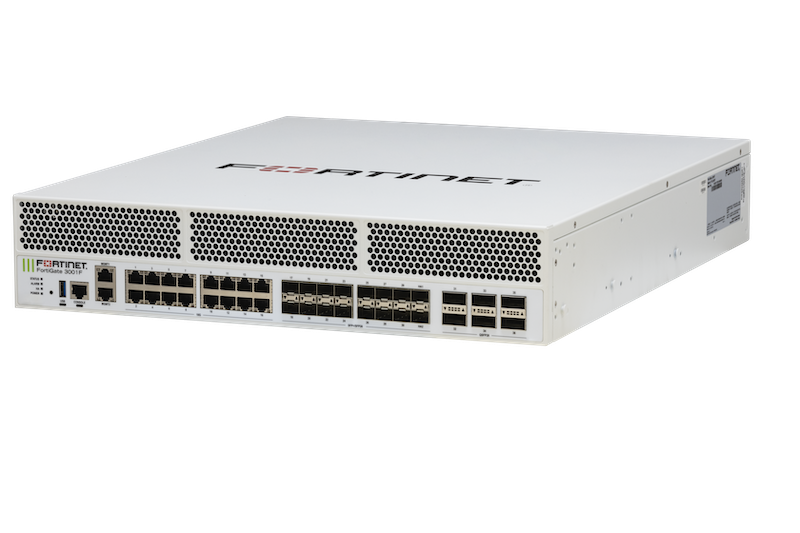Fortinet has announced the FortiGate 3000F, the latest Next-Generation Firewall (NGFW) powered by Fortinet’s purpose-built NP7 and CP9 security processing units (SPU) to support organisations in building hybrid IT architectures that accelerate digital innovation and fuel business growth. With built-in network and security convergence, dynamic network segmentation, automation, and natively integrated Zero Trust Network Access (ZTNA) capabilities, FortiGate 3000F enables ultra-scalable, security-driven networks that seamlessly converge networking and security without compromising security performance. FortiGate 3000F also offers the highest performance figures in the industry with Security Compute Ratings of up to 6x greater connections per second than competitive offerings.
John Maddison, EVP of products and CMO, Fortinet, said, “Hybrid compute will be around for the foreseeable future. The FortiGate 3000F, powered by Fortinet NP7 and CP9 security processing units, continues to move the performance bar forward, but just as importantly adds more converged networking and cybersecurity applications to the traditional network firewall. These applications include SD-WAN central hub, SSL inspection, and zero trust network access proxy. We believe that it’s because of these innovations that Fortinet has ranked #1 for three consecutive years in the Enterprise Data Center Use Case in the Gartner® Critical Capabilities report for Network Firewalls.”
FortiGate 3000F helps secure the datacenter and hybrid IT architectures in the following ways:
- Scalability: FortiGate 3000F continues to deliver the most scalability in the industry via purpose-built Fortinet SPUs, including the NP7 and CP9. These are engineered to radically increase the speed, scale, performance, efficiency, and value of Fortinet solutions while greatly improving user experience, reducing footprint, and lowering power requirements. FortiGate 3000F also offers 22x the Security Compute Rating for concurrent firewall sessions when compared to competitive offerings.
- Advanced Networking and Explicit Application Control: FortiGate NGFWs come with natively integrated ZTNA access proxy to allow users to access applications and resources from anywhere, at any time, with constant authentication while building and maintaining effective compliance and security controls. FortiGate NGFWs seamlessly converge and accelerate networking and security and offers industry leading routing capabilities to peer with multiple providers on the WAN (Wide Area Network) side, and interconnect with a wide array of vendors on the LAN (Local Area Network) side. Many Fortinet networks have simplified their operations by replacing routers with a single FortiGate device that offers both networking and security.
- Enterprise-Grade Security: With over 565,000 customers, industry-leading Fortinet solutions seamlessly weave networking, security, and essential AI/ML-powered FortiGuard services into a single platform, enabling IT teams to effectively manage internal and external threats, prevent lateral spread and ransomware, and avoid business disruptions and brand damage. FortiGate is the only NGFW in the industry that offers advanced content policies like video filtering to mainstream services like YouTube, Vimeo, and Dailymotion. Enterprises can build flexible policies to allow one or many categories as well as stringent network security controls that can allow or block up to the channel level. With unprecedented SSL inspection (including TLS 1.3) performance, the FortiGate NGFW is the only platform that detects threats hidden in encrypted paths and offers automated threat protection with the least performance degradation.
- Automate and Simplify: The Fortinet Fabric Management Center provides single-pane-of-glass management, automation, and orchestration across the Security Fabric, including support for over 470 ecosystem partners, to simplify enterprise-wide workflows. Its open API approach and cross-environment connectors also help simplify and ensure consistent security posture and enforcement across multi-cloud environments.










Discussion about this post